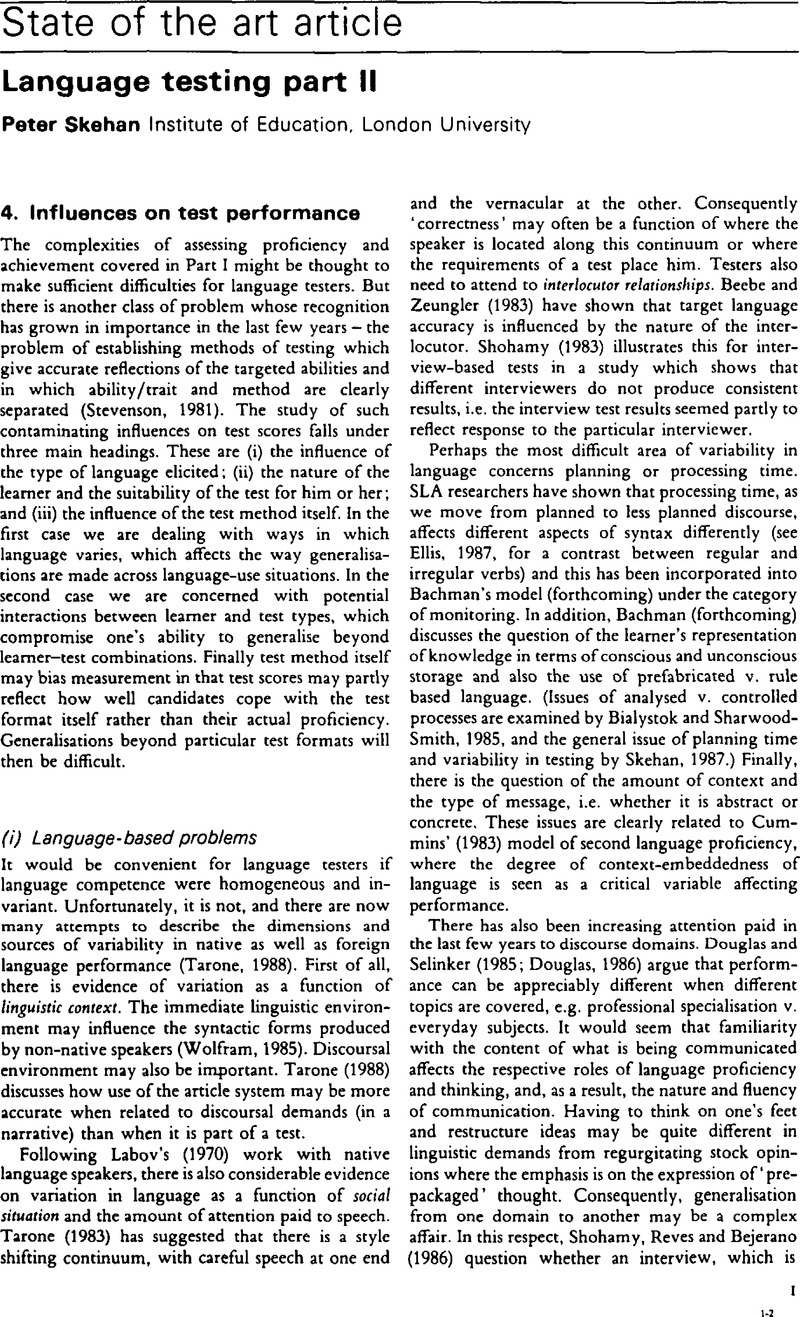Crossref Citations
This article has been cited by the following publications. This list is generated based on data provided by Crossref.
Bachman, Lyle F.
1989.
Assessment and Evaluation.
Annual Review of Applied Linguistics,
Vol. 10,
Issue. ,
p.
210.
Griffin, Patrick
1990.
Latent trait estimates of rater reliability in the international English Language Testing System (IELTS).
Australian Review of Applied Linguistics,
Vol. 13,
Issue. 2,
p.
1.
McNamara, T.F.
1990.
Item Response Theory and the validation of an ESP test for health professionals.
Language Testing,
Vol. 7,
Issue. 1,
p.
52.
Griffin, Patrick
1990.
Latent trait estimates of rater reliability in the International English Language Testing System (IELTS).
Australian Review of Applied Linguistics,
Vol. 13,
Issue. 1,
p.
123.
Ellis, Rod
1991.
Grammatically Judgments and Second Language Acquisition.
Studies in Second Language Acquisition,
Vol. 13,
Issue. 2,
p.
161.
McNamara, T.F.
1991.
Test dimensionality: IRT analysis of an ESP listening test1.
Language Testing,
Vol. 8,
Issue. 2,
p.
139.
Shohamy, Elana
1995.
Performance Assessment in Language Testing.
Annual Review of Applied Linguistics,
Vol. 15,
Issue. ,
p.
188.
Truscott, John
1996.
The Case Against Grammar Correction in L2 Writing Classes.
Language Learning,
Vol. 46,
Issue. 2,
p.
327.
Turner, Carolyn E.
and
Upshur, John A.
1996.
Developing rating scales for the assessment of second language performance.
Australian Review of Applied Linguistics. Series S,
Vol. 13,
Issue. ,
p.
55.
Bachman, Lyle F.
2000.
Modern language testing at the turn of the century: assuring that what we count counts.
Language Testing,
Vol. 17,
Issue. 1,
p.
1.
Alderson, J Charles
and
Banerjee, Jayanti
2001.
Language testing and assessment (Part I).
Language Teaching,
Vol. 34,
Issue. 4,
p.
213.
Davies, Alan
2003.
Three heresies of language testing research.
Language Testing,
Vol. 20,
Issue. 4,
p.
355.
Farhady, Hossein
2005.
Language Assessment: A Linguametric Perspective.
Language Assessment Quarterly,
Vol. 2,
Issue. 2,
p.
147.
Davies, Alan
2008.
Textbook trends in teaching language testing.
Language Testing,
Vol. 25,
Issue. 3,
p.
327.
McNamara, Tim
and
Knoch, Ute
2012.
The Rasch wars: The emergence of Rasch measurement in language testing.
Language Testing,
Vol. 29,
Issue. 4,
p.
555.
Davies, Alan
2013.
The Companion to Language Assessment.
p.
1.
Hudson, Thom
2013.
The Companion to Language Assessment.
p.
561.
Simons, Mathea
Vanhees, Claudio
Smits, Tom
and
Van De Putte, Karen
2019.
Remedying Foreign Language Anxiety through CLIL? A mixed-methods study with pupils, teachers and parents.
Revista de Lingüística y Lenguas Aplicadas,
Vol. 14,
Issue. 1,
p.
153.
Wang, Li
and
Fan, Jason
2021.
Working Towards a Proficiency Scale of Business English Writing: A Mixed-Methods Approach.
p.
101.
Kostromitina, Maria
and
Plonsky, Luke
2022.
ELICITED IMITATION TASKS AS A MEASURE OF L2 PROFICIENCY.
Studies in Second Language Acquisition,
Vol. 44,
Issue. 3,
p.
886.



